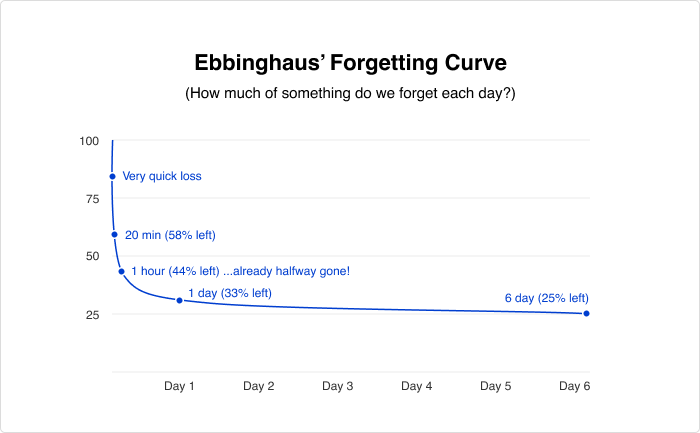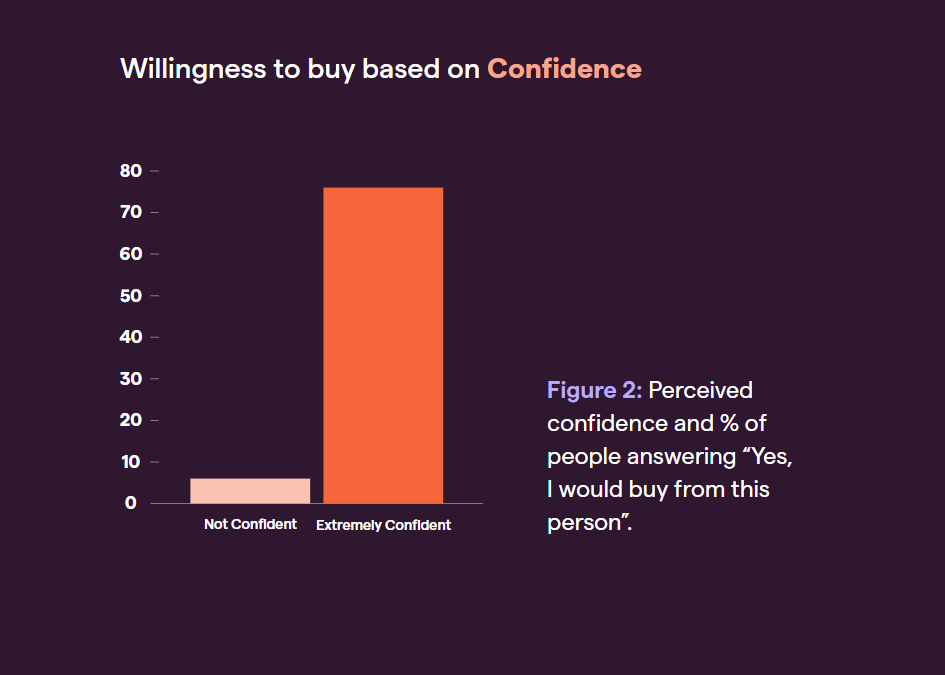So you spent a week (or two) pulling together data and resources, creating quiz questions, crafting a bespoke PowerPoint with voiceover, and putting it all together in Brainshark to create a new employee training module only to have ⅓ of your team watch it.
And data shows (see: Ebbinghaus Forgetting Curve) that the third who did watch it will likely only retain 33% of the information presented by the next day if you aren’t using modern training methods like microlearning and interactive experiences.

If your team members aren’t taking the time to complete training sessions or retaining the information, the results won’t show up in their performance — ultimately impacting your company’s bottom line.
So what can you do to revive your training program?
If you want to boost learning adoption, retention, and sales performance, corporate and academic research points to incorporating more interactivity in your training content, such as augmented and/or virtual reality (AR/VR), to make it more effective.
This article explains why that’s the case and how to take advantage of different interactive training technology in order to reap the returns.
The benefits of interactive training content
Increase employee adoption of learning content
The first step in making training more effective is getting more people to take it.
The main reason employees tune out or ignore traditional training sessions or videos is because they’re boring and rote. They don’t grab or hold the learner’s attention.
To make training successful you have to compete with everything else on employees’ minds and plates to win their attention. Because any time they’re spending on training is time they’re spending not doing something else they may consider more pressing or engaging (See: the attention economy).

Pictured: Augmented Reality MEDDPICC training game at our 2023 sales kickoff
A study of the effects of augmented reality on the brain showed that “AR induces a high level of visual attention in the brain” and “evokes a ‘surprising’ response in the brain.”
And when compared to the traditional video or “TV watching” experience, AR elicited 45% more attention as well as a lower “rejection” rate of the content by participants thanks to AR’s ability to surprise them.
Making your training content more stimulating with unexpected experiences will help capture and hold your team’s attention, creating a feedback loop of positive responses to on-the-job learning.
You’ll increase adoption right away with novel experiences, and as those experiences turn out fruitful and engaging employees will be more likely to repeat them long-term.
Learners retain more knowledge from interactive content
For training to translate to performance gains, employees need to remember what they’ve learned.
The same study showed that the brain is affected by three factors of augmented reality:
- Attention
- Surprise
- Memory
In fact, “The ‘AR-TEST’ research found that the ability to remember was 70% higher for tasks with AR compared to tasks that were not AR” regardless of the learner’s age.
Similar research from The American Journal of Educational Research also concluded that: when “lessons are more interactive… learners have a better understanding of the information,” emphasizing the value of more types of interactive learning in addition to augmented reality.
Better job performance
Time and time again we see that practice, training, coaching, whatever you want to call it, does make perfect — or at least demonstrates visible and palpable improvement over time.
In an original survey of 133,442 respondents, prospective buyers said that sellers who had practiced speaking confidently with an interactive AI coaching tool did in fact sound more confident, and were 13 times more likely to buy from them because of it.

(You can get the full report here)
So if you include more interactive elements in your training content to increase both adoption and retention, data shows you will see the results show up in their work.
Engage buyers and external teams
Outside of training your internal teams, there are the added benefits of engaging prospective buyers with interactive experiences, as well as onboarding external teams like channel sellers or even new customers.
A NielsenIQ global survey noted that “AR/VR technology will transform brand engagement” and “global consumers listed AR/VR as the top technology they’re seeking to assist, amplify, and augment their daily lives with 51% saying they are willing to use this technology to assess products.”
You can see a few examples of augmented reality used for customer engagement here: Want better engagement from your customers and sales reps? Use augmented reality.
How to create interactive training + what it looks like
Interactive content authoring
Creating interactive training content like augmented reality experiences and virtual rooms (more on these below) sounds intimidating, but it’s really just content authoring with a kick.
Authoring interactive content is not so different from what you already do now when creating Brainsharks for training— uploading different file and content types like videos, images, and audio into the authoring wizard to generate cohesive and impactful output.
And the outputs offer higher returns on your investment in both immediate and long-term value at the cost of just a few steps to your creation process. You can see what that process looks like in this demo video.
You can also employ features like document automation to help you to speed up and scale the content creation process over time.
Types of interactive content
Here’s a closer look at the different types of interactive content you can create via enhanced authoring.
Augmented reality
Augmented reality allows learners to view and interact with virtual objects in real space using mobile devices like smartphones and tablets.
AR/VR training offers advantages in terms of safety, accessibility, effectiveness, engagement, cost-effectiveness, and data collection compared to traditional training methods.
Because of these advantages, many industries like retail, healthcare, manufacturing, construction, aviation, retail, and even defense and military are already using AR for training.
Watch our AR scavenger hunt from SKO 2024 above and dive into how AR/VR are used in different industries in: How virtual and augmented reality are used in business
Virtual rooms
Virtual Rooms let you place different learning elements such as videos, quizzes, maps or graphics, or 3D products and product information into a single virtual room for employees to explore and interact with at their own pace.
You can use Virtual Rooms to create memorable learning events like sales kickoffs or product launches or include them as part of an onboarding curriculum.
Nonlinear/interactive studio presentations
Studio presentations are interactive slides, virtual documents, or web pages that let learners click through and explore information visually, helping them stay engaged with and remember it.
They replace static and forgettable PowerPoints or PDFs and can serve a variety of use cases from onboarding, to product training, to sales presentations.
They’re great for demonstrating how something works to explain a complex or esoteric concept or for showing the end result of a process, like in the example above showing the effects of medication on a coronary artery.
Next steps
Ready to breathe new life into your training program and revive your revenue teams?
Just let us know you’re interested and we’ll get you creating interactive content in no time.
